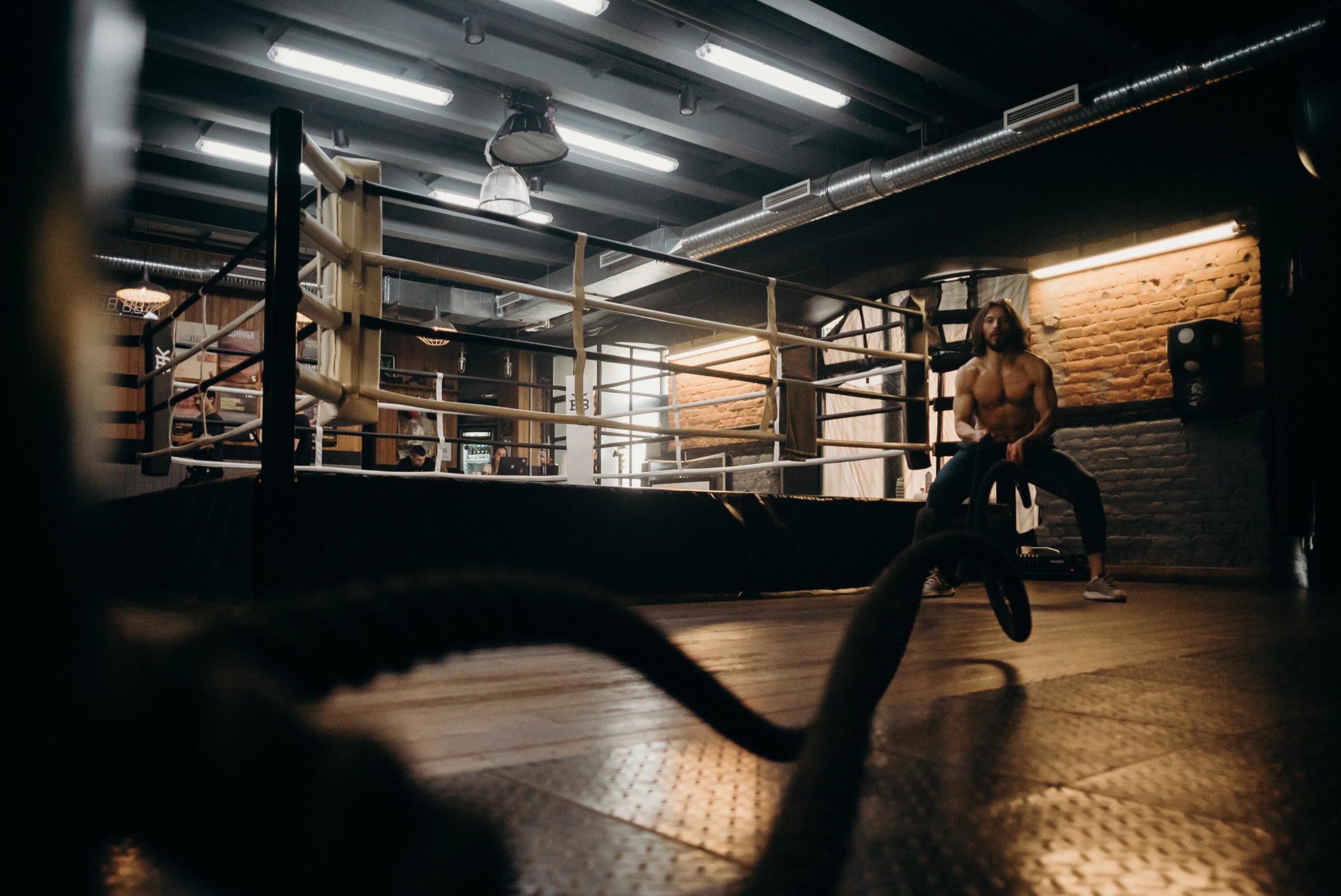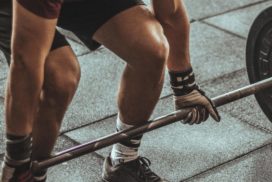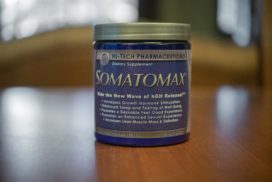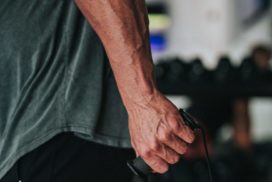Before going in to the what the 5 best types of cardio for weightlifters are, it first needs to be stated why weightlifters should even do cardio.
Assuming that as a weightlifter you do not particularly enjoy non-lifting activity such as cardio, why should you do it?
To answer this, it now needs to be clarified what kinds of cardio are beneficial to weightlifters and what kinds are not.
To many weightlifters cardio may seem like a necessary evil only to be done in the depths of a fasted state during a cut. This opinion results from the “cardio kills gains” belief. This belief is grounded in truth: many studies have found there to be a negative correlation with endurance training and results from resistance training, meaning that long runs and general lengthy exercise are going to hurt the gains you’re making from working out.
However, there are kinds of cardio that avoid this negative effect on gains and are worthy of doing in the interest of general fitness, a better physique, and improvements in strength.
The Different Kinds of Cardio
Cardio can generally be sorted into anaerobic (short intense cardio) and aerobic (longer exercise). Anaerobic exercise is defined by when the body uses fuel from glycogen in muscles. Aerobic exercise is defined by exercise where the body uses fuel from oxygen.
Of these two, anaerobic exercise is the sort of cardio that is going to be of most benefit to weightlifters. The reason for this is that this type of exercise is the most optimal for hormones, fat-burning, maintaining lean muscle mass, and building lean muscle mass.
Anaerobic exercise is better for weightlifters from a biological/ evolutionary point of view as well because it is the type of exercise that typically hunters would be doing (in chasing prey). A hunter would need higher amounts of testosterone and muscle to hunt effectively. On the contrary, aerobic exercise would mainly be done by farmers and foragers (tilling fields all day and hiking for long periods of time). Farmers and foragers have less need of testosterone and muscle and more need of general endurance and an efficient cardiovascular system to be able to walk and do field labor for long lengths of time.
This is why for marathon runners and distance cyclists, aerobic training is better. They have less need of muscle and more need of a body that can use oxygen efficiently in order to win races. For sprinters however, anaerobic training is better to build muscle that will be able to supply the necessary fuel to win shorter sprints in their competitions. Marathon runners typically are very lean with little muscle mass. Sprinters are usually quite muscular and well-built.
Another point in favor of anaerobic exercise over aerobic exercise for weightlifters is that anaerobic exercise actually has been shown to increase aerobic capacity (the amount of oxygen your body can deliver to muscles during high intensity exercise) better than aerobic training. To read about this in more detail, here is an excerpt with proof. Since the primary benefit of aerobic training is improved aerobic capacity and anaerobic training is able to accomplish this to a higher degree, even if you are primarily interested in cardiovascular health, anaerobic training is a better form of exercise to be doing.
Now, the 5 best types of cardio for weightlifters that I would recommend are battle rope cardio, boxing, sprints, stationary bicycling, and swimming.
1. Battle Rope
The best type of cardio I would recommend for weightlifters is battle rope training. I make this recommendation for a few reasons. One of the main reasons that battle rope training is the optimal form of anaerobic cardio for weightlifters is that it does a very good job of hitting your chest, shoulders, and tri’s in addition to burning fat and elevating testosterone. It also has one of the quickest elevated heart rate responses of all anaerobic training exercises which is ideal for better circulation, improved vascularity, better workouts, and overall better health.
Battle rope training is ideal for directly after push workouts since your chest, shoulder, and tri’s have already been hit. These ropes can also be used to focus more on back and legs as well so this form of cardio can easily follow any workout you’re doing.
By doing battle rope training you’re getting the fat-burning, heart rate-elevating, cardiovascular health-improving benefits of anaerobic exercise but also activating muscles effectively.
Battle ropes can be used to do HIIT (high-intensity interval training) in multiple ways. This video gives visual examples of the main exercises that can be done with them as well as additional reasons that they are so effective both for cardiovascular health and burning fat as well as muscle growth.
Many gyms have battle ropes available for use. If not, a standard rope could serve as substitutes or this 40ft battle rope can be bought from Dynapro for $80. This battle rope by Dynapro is the best available rope based on overall quality and price and will definitely be able to serve its function as a long-lasting and multi-purpose battle rope to train with.
If you’re tasking yourself with constructing a home gym or simply want the freedom to workout in your home out of convenience, to use the battle rope you would need some sort of anchor to hold it in place. For that, I would suggest this wall mount for a simple setup and reliable way to hold the rope or, if you don’t want to nail a mount into a wall, this portable base. Both options would work with the battle rope from Dynapro and are the most cost-efficient products.
2. Boxing
The second most optimal form of anaerobic exercise for a weightlifter is boxing.
Boxing is a great type of anaerobic exercise because, like battle ropes, it has multiple benefits adding on to the existing benefits from doing HIIT.
Boxing works your shoulders and chest if you are punching hard. It also improves coordination and improves how well you can handle yourself in a fight. Furthermore, it allows you to increase your heart rate very rapidly, yielding more benefits from this type of training.
Boxing is best done following a push day by using a punching bag and doing short bouts of intense boxing. This will strengthen your wrists and shoulders and also burn fat.
Many gyms have punching bags, if not this punching bag the best one to check out. It is affordable, of high quality, and overall durable. It can be hung using the wall mount previously mentioned if you are able to find a place on your ceiling to hold the bag.
3. Sprints
Following boxing, sprints are another great anaerobic exercise to do. This is because sprints, particularly uphill sprints, are great for stimulating muscle growth in the hamstrings, glutes, calves, and quads. Sprints also effectively elevate your heart rate, giving you the benefits of anaerobic training.
Sprints are ideally done for distances of 50-400m and I suggest doing them uphill. If uphill sprints are too strenuous, start on a flat surface and work up to an incline.
Some of the benefits of doing sprints are better fat oxidation (better fat burning), building muscle, elevated levels of protein synthesis, improved delivery of oxygen to muscles, heart health, and increased testosterone.
To do sprints, all you need is a hill. If you would prefer to use a treadmill and workout at home, the folding treadmill machine is currently the most optimal treadmill available based on quality and price. It has a control handle which is easier to use than traditional treadmills, a heart rate and calorie monitor, it can fold for storage, and it has multiple incline positions it can be set to.
4. Stationary Bicycle
Another great way to increase your testosterone, protein synthesis, lean muscle mass, heart health, fat oxidation, and aerobic capacity through anaerobic exercise is by using a stationary bicycle.
Stationary bicycles are generally more optimal than riding a regular bike because you can ride them regardless of year-round conditions, they have multiple modes of difficulty, they can track your overall distance riden, calories burned, and heart rate, and they can be used anywhere that can fit a 4ft by 2ft piece of equipment.
The benefits of using a stationary bicycle are similar to doing sprints. You will build muscle in your legs and will be able to gain the benefits of anaerobic exercise as well.
If you are interesting in purchasing a stationary bicycle for a home gym or to use in your home as opposed to other forms of cardio that require a different set of conditions than the area you live, the best option is the Yosuda exercise bike. This bike is great due to the overall amount of size it takes up and its price when compared to other stationary bicycles.
5. Swimming
The last type of anaerobic exercise that is ideal for weightlifters is swimming.
Most people have heard of swimming being praised for its ability to build an excellent physique. Swimmers are famous for having six packs and muscular backs. This is because swimming forces engagement of many of the muscles in the upper body to push yourself through the water.
Swimming is great for developing lats, core strength, and back muscles as well as gaining the benefits of anaerobic exercise.
I recommend doing swimming in an olympic sized pool although even a backyard pool will most likely be able to accomplish all the benefits of swimming as well. It is best to swim in high-intensity intervals to ensure that you are doing anaerobic exercise and building muscle as opposed to using oxygen as your fuel source.
Summary
The best 5 types of cardio for weightlifters who are interested in building muscle and optimizing hormones are battle rope cardio, boxing, sprints, stationary bicycling, and swimming. All of these types of cardio done in high-intensity intervals will build lean muscle mass, improve heart health, raise fat oxidation, increase protein synthesis, better aerobic capacity, and increase testosterone.
For more on training, such as at-home chest exercises and back exercises that can be done at home without equipment, click here.







